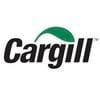Claw lesions in individually and loose housed sows in Greek swine farms
Published: October 10, 2014
Source : M Lisgara, P Kostoulas, V Skampardonis, Leonidas Leontides (Department of Epidemiology, Biostatistics and Economics of Animal Production, School of Veterinary Medicine, University of Thessaly, Greece)
Introduction
Locomotor problems appear as the second most common sow removal reason (2). Claw lesions are an important underlying cause of locomotor problems in pigs (1). In the European Union all pig herds, from 2013 onwards, should loose house the sows after the fourth week of pregnancy. However, the frequency of claw lesions and lameness among loose housed sows was reported higher than the respective frequency among sows housed in individual stalls (3). Therefore, the objective of this study was the characterization and estimation of the prevalence of claw lesions in three Greek swine herds, in the first 6 months of 2013. One of the herds had fully complied before January 2013 whereas the other two complied after June 2013.
Materials and Methods
Three farrow-to-finish herds with 330 (A), 160 (B) and 800 (C) sows, respectively, were studied. Herds A and B kept pregnant sows in individual stalls whereas in herd C they were loose housed in groups of 8-12. Upon entry of sows to the lactation facilities, their claws were examined for lesions and scored by three, previously trained, farm employees. Scoring followed the Dutch system (4) with some modifications. Specifically, the severity scale run from 1 (no lesion/normal length) to 3 (severe lesion/very long claw) except for the coronary band, which was scored from 1 (no lesions) to 2 (severe lesions) and we scored lateral and medial claws separately. The evaluated anatomical sites were the heel, the sole, the white line, the wall, and the coronary band of the claw, its length (CL) and the length of the dew claws (DCL). The association between lesion score and sow parity, adjusted for herd, was evaluated for significance, for the three anatomical sites most commonly affected, in three generalized ordered logistic models (Stata Statistical Software. College Station, TX). In the analyses, parities were grouped in three categories, namely parities 1 and 2, 3-5, and ≥6.
Locomotor problems appear as the second most common sow removal reason (2). Claw lesions are an important underlying cause of locomotor problems in pigs (1). In the European Union all pig herds, from 2013 onwards, should loose house the sows after the fourth week of pregnancy. However, the frequency of claw lesions and lameness among loose housed sows was reported higher than the respective frequency among sows housed in individual stalls (3). Therefore, the objective of this study was the characterization and estimation of the prevalence of claw lesions in three Greek swine herds, in the first 6 months of 2013. One of the herds had fully complied before January 2013 whereas the other two complied after June 2013.
Materials and Methods
Three farrow-to-finish herds with 330 (A), 160 (B) and 800 (C) sows, respectively, were studied. Herds A and B kept pregnant sows in individual stalls whereas in herd C they were loose housed in groups of 8-12. Upon entry of sows to the lactation facilities, their claws were examined for lesions and scored by three, previously trained, farm employees. Scoring followed the Dutch system (4) with some modifications. Specifically, the severity scale run from 1 (no lesion/normal length) to 3 (severe lesion/very long claw) except for the coronary band, which was scored from 1 (no lesions) to 2 (severe lesions) and we scored lateral and medial claws separately. The evaluated anatomical sites were the heel, the sole, the white line, the wall, and the coronary band of the claw, its length (CL) and the length of the dew claws (DCL). The association between lesion score and sow parity, adjusted for herd, was evaluated for significance, for the three anatomical sites most commonly affected, in three generalized ordered logistic models (Stata Statistical Software. College Station, TX). In the analyses, parities were grouped in three categories, namely parities 1 and 2, 3-5, and ≥6.
Results
Four hundred and forty-two sows, of parities 1-10, were scored (127 herd A, 70 herd B, and 245 herd C). At least one lesion was detected in 336/442 (98.6%) of the sows. In herds A and B, the 2 most frequent lesions were CL 117/127 (92%) and DCL 116/127 (91.3%) and in the heel 64/70 (91%) and DCL 56/70 (80%), respectively. In herd C most frequent lesion were in the heel 233/245 (95%) and DCL 223/245 (91%). The herd-adjusted associations between lesion score and parity are in Table
1.
Four hundred and forty-two sows, of parities 1-10, were scored (127 herd A, 70 herd B, and 245 herd C). At least one lesion was detected in 336/442 (98.6%) of the sows. In herds A and B, the 2 most frequent lesions were CL 117/127 (92%) and DCL 116/127 (91.3%) and in the heel 64/70 (91%) and DCL 56/70 (80%), respectively. In herd C most frequent lesion were in the heel 233/245 (95%) and DCL 223/245 (91%). The herd-adjusted associations between lesion score and parity are in Table
1.

Conclusions and Discussion
Similar to previous studies (5), we recorded very high frequency of claw lesions in all herds. The anatomical sites most frequently affected were the heel area, CL and DCL. The severity of the lesions increased with increasing sow-parity. These results indicate that sow longevity is severely affected by claw health with likely long-term consequences in productivity and welfare.
Acknowledgments
The study was financially supported by the European Regional Development Fund and the Greek Ministry of Education and Religious Affairs (GSRT).
References
1. Dewey CE et al. 1993. Vet J 34:555-556.
2. Engblom L. et al. 2007. Livestock Sci 106:76-86.
3. Gjein and Larssen 1995. Acta Vet Scand 36:433-442.
4. Hoofs AIJ 2006. http://www.verantwoordeveehouderij. nl.
5. Pluym L. et al 2011. Vet Medicina 56: 101-109
Similar to previous studies (5), we recorded very high frequency of claw lesions in all herds. The anatomical sites most frequently affected were the heel area, CL and DCL. The severity of the lesions increased with increasing sow-parity. These results indicate that sow longevity is severely affected by claw health with likely long-term consequences in productivity and welfare.
Acknowledgments
The study was financially supported by the European Regional Development Fund and the Greek Ministry of Education and Religious Affairs (GSRT).
References
1. Dewey CE et al. 1993. Vet J 34:555-556.
2. Engblom L. et al. 2007. Livestock Sci 106:76-86.
3. Gjein and Larssen 1995. Acta Vet Scand 36:433-442.
4. Hoofs AIJ 2006. http://www.verantwoordeveehouderij. nl.
5. Pluym L. et al 2011. Vet Medicina 56: 101-109
Content from the event:
Related topics:
Mentioned in this news release:

Recommend
Comment
Share

Would you like to discuss another topic? Create a new post to engage with experts in the community.










